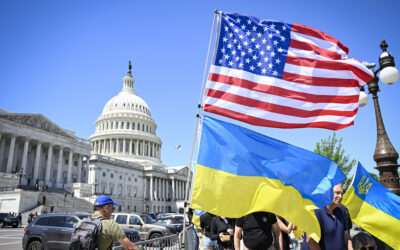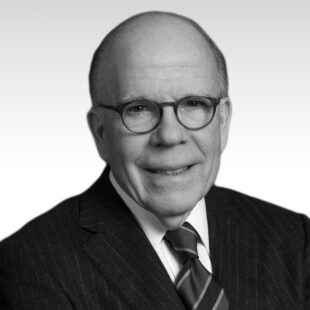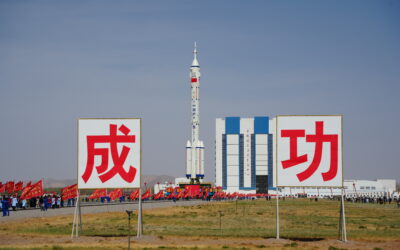John McLaughlin served as Acting Director of Central Intelligence and as Deputy Director of Central Intelligence. He is the Distinguished Practitioner in Residence at the Johns Hopkins School of Advanced International Studies (SAIS).
OPINION — The Biden administration slapped economic sanctions last week on a number of Russian officials in response to the poisoning of opposition leader Alexei Navalny in August and his imprisonment upon returning to Moscow in January after successful treatment in Germany. Navalny’s supporters met the Kremlin’s action with waves of protest, for which 4,000 were detained or arrested. The protests have now quieted down, and when that happens in Russia, the temptation, based on recent history, is to think that this is another flash-in-the-pan movement unlikely to survive harsh repression. But as a longtime Russia watcher, I think there is modest reason to question that conclusion in the case of Navalny and his supporters.
The Biden administration says it has intelligence that judges with “high confidence” that Navalny’s poisoning was carried out by a Russian intelligence agency. Navalny also tricked a federal agent into admitting it in a “sting” phone call. The Kremlin of course denies this, but such denials are threadbare in the aftermath of at least three high-profile poisonings since 2006 of people opposing the regime or associated with regime opponents.
The underlying question is whether the protests related to Navalny are fundamentally different from previous ones and potentially more durable. Predictions about Russia are notoriously difficult, as Winston Churchill famously noted, but there are some aspects of Navalny’s movement that seem unique among modern protest movements in Russia and compared to similar protests in neighboring Belarus.
First, Navalny has been a durable presence in Russian politics for close to a dozen years. He first broke away from the mainstream in 2007, espousing a brand of Russian nationalism that included gun rights, opposition to immigration and approval of Russian intervention in Georgia. But over the last six or seven years, his views have evolved in the direction of classic Western liberalism. Today, in American terms, Navalny might be seen as “progressive.” He is not especially popular — pollsters estimate he has about 15 percent to 20 percent support at home. But he has become a household name in Russia and, if celebrity counts for anything in politics, he has that foundation to build on.
Second, his scorn for President Putin appears to have touched the president in a more personal way than previous critics. Key to this is the video that Navalny’s team put together alleging to show a lavish palace for Putin on the Black Sea. Although Putin rejects it, and most Russians who saw it say it didn’t change their views of the president, the YouTube video w ent viral with at least 110 million views and clearly struck a nerve with Putin.
Third, Navalny’s movement uses social media more skillfully than his predecessors.He has been able to generate good turnouts for street demonstrations, but more indicative of the movement’s presence are its two YouTube channels with 6 million subscribers and around 30 million followers. The government, moreover, has hesitated to clamp down on the internet, in part because the population, particularly young people, are so enamored with social media and the availability of so many Western apps.
Fourth, the opposition leader is organized nationwide. Navalny’s movement has offices in most major Russian cities, at least 40, staffed by close to 300 paid workers and several thousand volunteers — not overwhelming numbers in such a large country with 11 time zones, but more than nontraditional opposition figures have typically mustered or sustained.
Fifth, Navalny has a platform. As with all political platforms, Navalny’s must be seen as aspirational, but it is one that, if implemented, proposes moving Russia toward a more normal “European” state. The emphasis is on goals such as judicial reform, anti-corruption laws, raising wages and social benefits, and shifting Russia’s strongly presidential system toward one that restores more authority to states and localities. His foreign policy views are harder to discern, and it is too soon to say that he would move toward closer relations with Europe or the United States. But this “vision” goes further than opposition leaders in neighboring Belarus, who are focused on bringing down the regime without a comparable program to replace it.
Finally, Navalny’s group has a long-term view. They don’t expect success overnight, and they aim to wear down the regime over time with the goal of eventually outnumbering Putin’s supporters. Emblematic of this is their seriousness about elections. They are not running candidates directly in the September elections for the Duma (Russia’s lower house) but will aim to support candidates who can beat Putin’s — a tactic Navalny calls “smart voting.” This has been modestly successful in some municipal votes.
As impressive as Navalny’s strategy and tactics are, he is still climbing a steep hill. Polling shows that, in addition to his low popularity, Russians, long accustomed to hardship and disillusion, are skeptical that he would bring anything better to the country’s governance or to their lives. At the same time, Putin’s public rating, even though it hit an all-time low during the worst part of the pandemic, is now holding steady at about 65 percent approval. This is a decline from the 89 percent he enjoyed after seizing Crimea from Ukraine, but Putin remains the country’s most popular politician.
Bottom line: We cannot yet know whether Navalny’s movement will have the staying power and tenacity to change Russia in fundamental ways. But it is also too soon to add him to the long list of protesters who have achieved momentary notoriety, only to fade away under the burden of Kremlin condemnation and repression.
This column by Cipher Brief Expert John McLaughlin was first published by our friends at Ozy
Read more expert-driven national security insights, perspectives and analysis in The Cipher Brief










